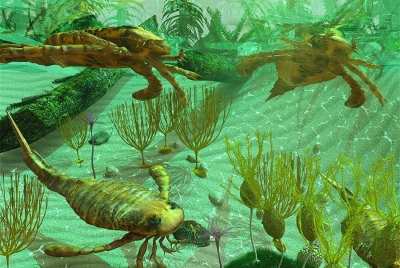
Cambrian explosion, the unparalleled emergence of organisms between 541 million and approximately 530 million years ago at the beginning of the Cambrian Period. The event was characterized by the appearance of many of the major phyla (between 20 and 35) that make up modern animal life. Many other phyla also evolved during this time, the great majority of which became extinct during the following 50 to 100 million years. Ironically, many of the most successful modern phyla (including the chordates, which encompass all vertebrates) are rare elements in Cambrian assemblages; phyla that include the arthropods and sponges contained the most numerically dominant taxa (taxonomic groups) during the Cambrian, and those were the taxa that became extinct.
The beginning of the Cambrian Period is marked by the evolution of hard body parts such as calcium carbonate shells. These body parts fossilize more easily than soft tissues, and thus the fossil record becomes much more complete after their appearance. Many lineages of animals independently evolved hard parts at about the same time. The reasons for this are still debated, but a leading theory is that the amount of oxygen in the atmosphere had finally reached levels that allowed large, complex animals to exist. Oxygen levels may also have facilitated the metabolic processes that produce collagen, a protein building block that is the basis for hard structures in the body.
Other major changes that occurred in the Early Cambrian (541 to 510 million years ago) include the development of animal species that burrowed into the sediments of the seafloor, rather than lying on top of it, and the evolution of the first carbonate reefs, which were built by spongelike animals called archaeocyathids.
Credit : Britannica
Picture Credit : Google




